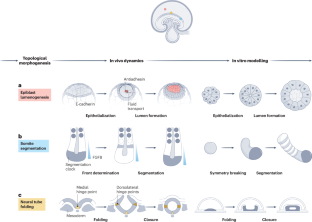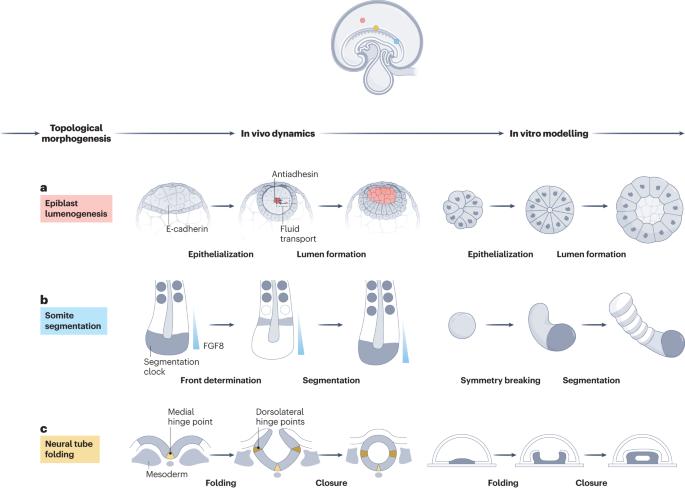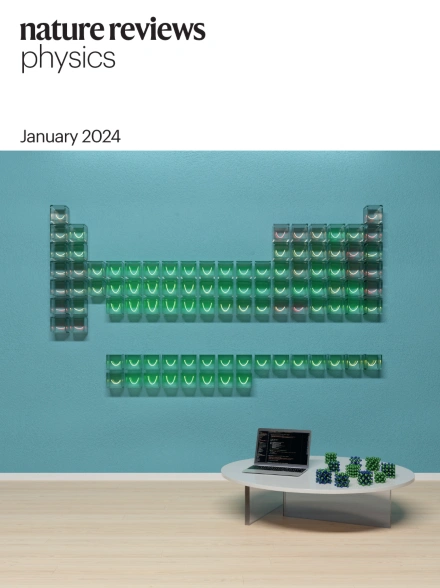Morphogenesis beyond in vivo
IF 44.8
1区 物理与天体物理
Q1 PHYSICS, APPLIED
引用次数: 0
Abstract
Morphogenetic events during development shape the body plan and establish structural foundations for tissue forms and functions. Acquiring spatiotemporal information of development, especially for humans, is limited by technical and ethical constraints. Thus, both stem cell-based, in vitro development models and theoretical models have been constructed to recapitulate morphogenetic events during development. These in vitro experimental and theoretical models offer accessibility, efficiency and modulability. However, their physiological relevance often remains obscure, owing to their simplistic nature, which obstructs their applicability as faithful and predictive models of natural development. We examine existing in vitro experimental and theoretical models of various developmental events and compare them with the current knowledge of natural development, with particular considerations of biomechanical driving forces and stereotypic morphogenetic features. We highlight state-of-the-art methods used to construct these in vitro models and emphasize the biomechanical and biophysical principles these models have helped unveil. We also discuss challenges faced by the current in vitro experimental and theoretical models and propose how theoretical modelling and in vitro experimental models should be combined with in vivo studies to advance fundamental understanding of development. Beyond in vivo models, stem cell-based in vitro models and theoretical models of morphogenesis have been constructed to recapitulate morphogenetic events during embryo development with heightened quantitative specificity. This Review discusses the accomplishments, challenges and opportunities of these models in promoting knowledge of mammalian development, including human development.


超越体内的形态发生
发育过程中的形态发生塑造了身体的结构,并为组织的形态和功能奠定了结构基础。获取发育的时空信息,特别是人类发育的时空信息,受到技术和伦理的限制。因此,人们构建了基于干细胞的体外发育模型和理论模型,以重现发育过程中的形态发生事件。这些体外实验和理论模型具有易用性、高效性和可调控性。然而,由于其简单性,它们的生理相关性往往仍然模糊不清,这阻碍了它们作为自然发育的忠实和预测模型的适用性。我们研究了各种发育事件的现有体外实验和理论模型,并将它们与当前的自然发育知识进行了比较,特别考虑了生物力学驱动力和定型形态发生特征。我们重点介绍了用于构建这些体外模型的最先进方法,并强调了这些模型有助于揭示的生物力学和生物物理学原理。我们还讨论了当前体外实验和理论模型所面临的挑战,并提出理论建模和体外实验模型应如何与体内研究相结合,以推进对发育的基本认识。
本文章由计算机程序翻译,如有差异,请以英文原文为准。
求助全文
约1分钟内获得全文
求助全文
来源期刊

Nature Reviews Physics
Multiple-
CiteScore
47.80
自引率
0.50%
发文量
122
期刊介绍:
Nature Reviews Physics is an online-only reviews journal, part of the Nature Reviews portfolio of journals. It publishes high-quality technical reference, review, and commentary articles in all areas of fundamental and applied physics. The journal offers a range of content types, including Reviews, Perspectives, Roadmaps, Technical Reviews, Expert Recommendations, Comments, Editorials, Research Highlights, Features, and News & Views, which cover significant advances in the field and topical issues. Nature Reviews Physics is published monthly from January 2019 and does not have external, academic editors. Instead, all editorial decisions are made by a dedicated team of full-time professional editors.
 求助内容:
求助内容: 应助结果提醒方式:
应助结果提醒方式:


